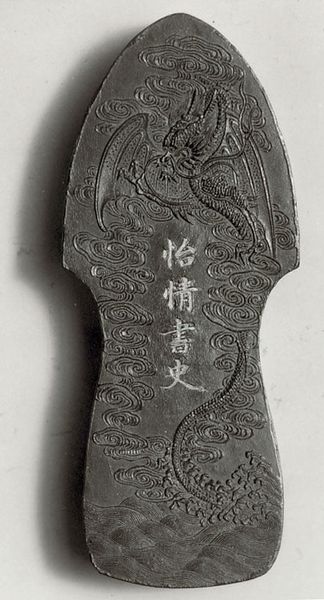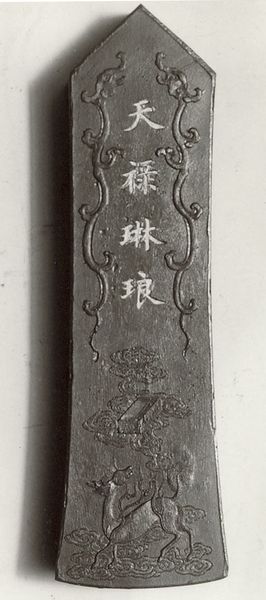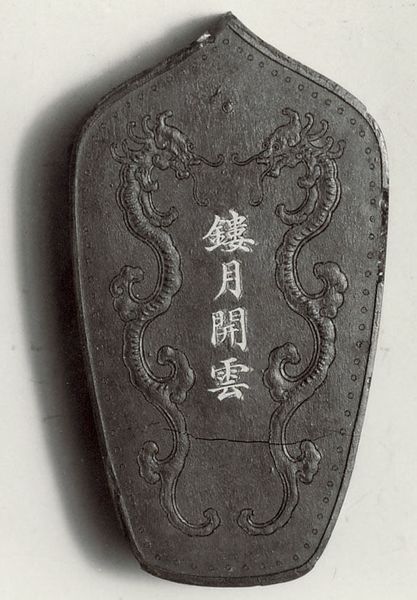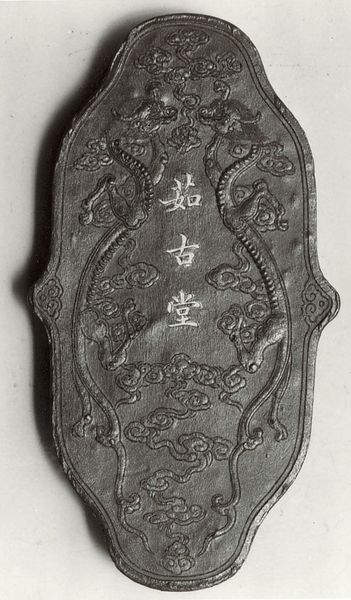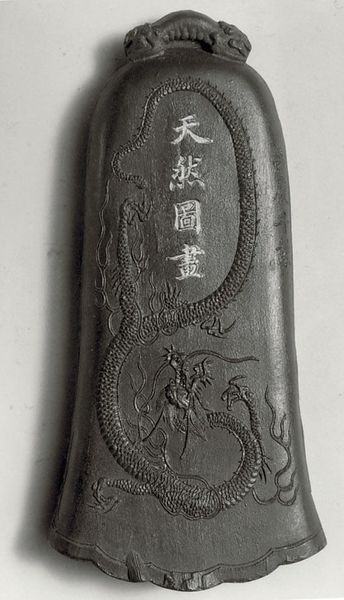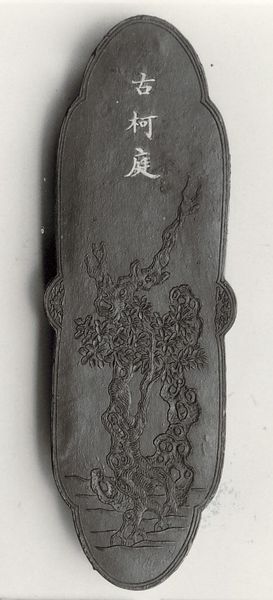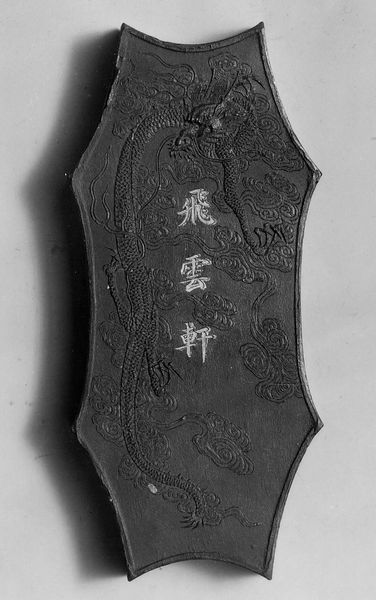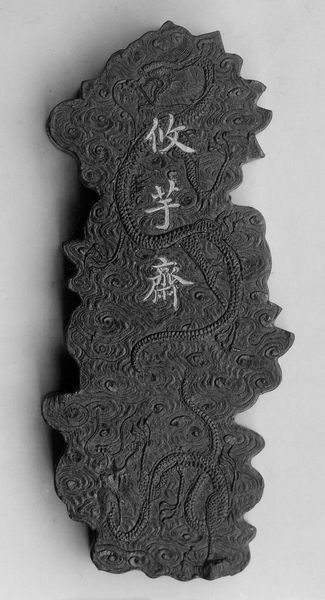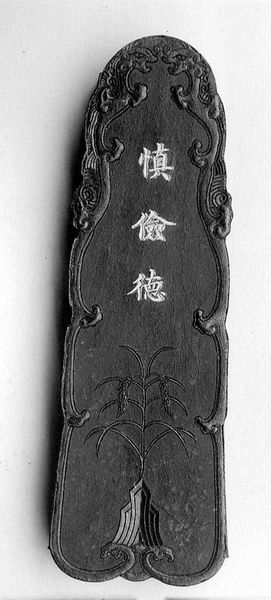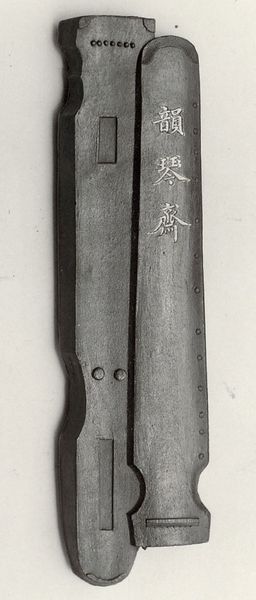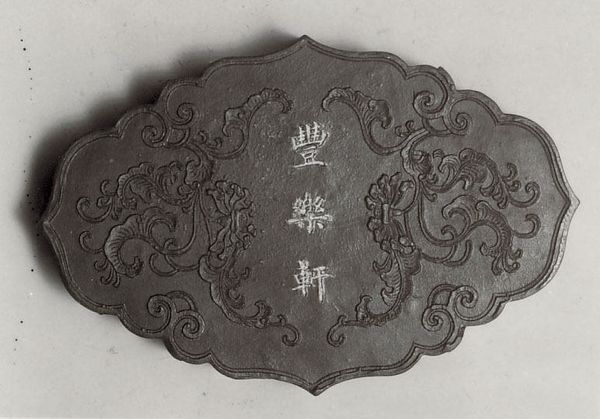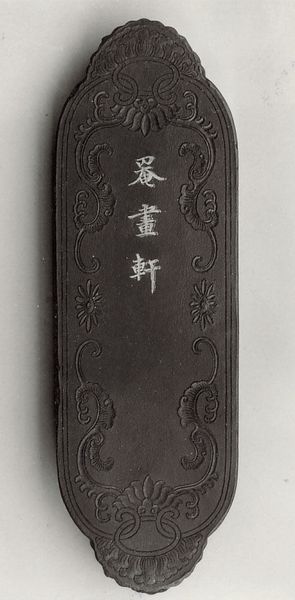
carving, metal, relief, bronze, ink, sculpture
#
carving
#
metal
#
sculpture
#
asian-art
#
relief
#
bronze
#
ink
#
sculpture
#
statue
Dimensions: H. 3 7/8 in. (9.8 cm); W. 1 7/8 in. (4.8 cm)
Copyright: Public Domain
Editor: This is “Beautiful Scene Pavilion” by Jian Guzhai, dating from 1871 to 1933. It seems to be made of bronze with some carving and relief work. I'm struck by how the design seems to evoke traditional East Asian motifs, but with an almost industrial starkness. What do you see in this piece? Curator: What strikes me is the inherent tension between the delicate, natural imagery and the seemingly rigid structure and metallic materiality. This piece isn’t simply a decorative object; it's a coded narrative. How might its creation during a period of intense socio-political upheaval in China – marked by colonial pressures and internal reforms – affect our understanding of its imagery and function? Editor: That’s fascinating! I hadn't considered the colonial context. Does the "Beautiful Scene" alluded to in the title then take on a more ironic or perhaps even resistant tone? Curator: Precisely. It can be seen as a commentary on idealized notions of Chinese identity and landscape being threatened by modernization. Consider the pavilion itself - traditionally a space for cultivated leisure - and how it contrasts with the rapidly changing realities of the time. The lotus flower at the base, a traditional symbol of purity and enlightenment, is juxtaposed with... well, with what do *you* see it juxtaposed? What's missing? Editor: Now that you mention it, the image feels both complete and incomplete somehow, especially because there's no background. Maybe that tension between the permanence of bronze and ink with such seemingly vulnerable and idealist image is a statement on the fragility of culture during the time period. Curator: Excellent observation. By examining these supposed contradictions in context, we are prompted to contemplate this object not as a detached aesthetic artifact but rather as a deeply nuanced expression. What new layers of interpretation did you glean from it? Editor: Considering its historical context really highlighted its deeper meaning to me, so it makes me think more deeply about cultural preservation and resilience!
Comments
No comments
Be the first to comment and join the conversation on the ultimate creative platform.
